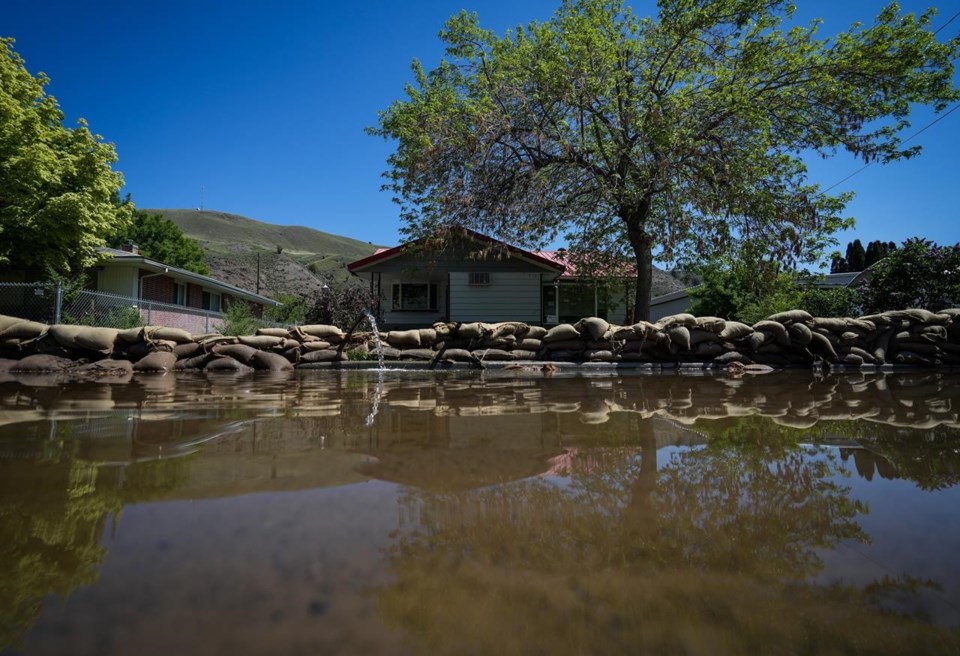VANCOUVER ŌĆö Catastrophic flooding in British Columbia that caused billions in damages to infrastructure, property and homes has resulted in a new comprehensive flood strategy to help communities reduce risk and respond to extreme events.
Nathan Cullen, minister of water, land and resource stewardship, told a news conference Thursday that the province worked alongside local governments and First Nations to draft the sa╣·╝╩┤½├Į Flood Strategy, which will be a road map to navigate climate events.
"Floods, similar to droughts, historically were very localized, very short term," he said. "But like droughts, now we perceive, with the effects of climate change, that floods will be much larger region-wide and have much larger impacts, hence the need for a flood strategy that incorporates ŌĆ” all communities."
The Insurance Bureau of sa╣·╝╩┤½├Į lauded the announcement, calling it an important step as more than 200,000 sa╣·╝╩┤½├Į households remain at "high risk of flood damage."
A series of atmospheric rivers swamped southwestern sa╣·╝╩┤½├Į in November 2021, washing away portions of eight major highways, while cutting traffic flow between the Lower Mainland and the rest of sa╣·╝╩┤½├Į A landslide washed over a section of Highway 99, between Pemberton and Lillooet, killing five people.
The repair bill would be in the billions.
Farms, homes and portions of communities were inundated, causing over $675 million in insured flood damage, the insurance bureau said in a statement Thursday.
The disaster showcased the need to better understand flood risks, the bureau said.
"That event is part of an alarming trend, as insured losses in sa╣·╝╩┤½├Į due to severe weather now average over $2 billion annually."
Consultations for the new plan began shortly after the 2021 floods.
One of the most devastated communities was the City of Merritt, where the torrent of rain pushed the Coldwater River to overflow its banks. The flooding caused dike failures, the shut-down of the city's water system and wastewater treatment plant and extensive property damage, at a cost of about $150 million, the city's website says.
Merritt flood recovery director Sean Strang said the provincial and federal governments have provided funding and support in the recovery efforts, but dike rebuilding recently stalled leaving 1,270 properties vulnerable to future flooding.
Strang said in an interview the city needs about $20 million in provincial funding to complete the project.
"At this current time, without provincial funding, we are significantly more exposed than we ever have been," he said, noting the flood washed away the dikes that were built in the 1970s.
"So, in addition to not having modern standard dikes, we don't have old standard dikes either, and those aren't able to be rebuilt until we get that provincial contribution."
Strang said the city welcomes the new plan, noting it was consulted beforehand.
"We're excited to see that this is officially released. We just need to see it being implemented now," he said.
During the news conference, Cullen said Merritt is an example of "what happens when we don't take care of the infrastructure over time."
"We have funded Merritt quite significantly to this point in a number of different projects, and we're happy to see those projects go ahead," he said when asked about the call for dike funding.
"We'll continue to see the work happen and continue to add to the investments we've been making," he said.
Cullen said the flood strategy focus will be in four key areas: assessing flood risks with floodplain mapping, increasing communication with local and First Nation governments, better preparing for floods and response, and helping with flood resilience.
Bowinn Ma, minister of emergency management and climate readiness, told the news conference that the province is also adding $39 million to the Community Emergency Preparedness Fund that will go toward more than 50 projects.
The funding will be used for work on dike rehabilitation, reinforcing a drainage-pump system, upgrading community centres to operate as gathering places for people during extreme weather and launching watershed restoration projects.
"These projects will go a long way toward keeping people and their communities safer from disasters and extreme weather events such as flooding, drought and extreme heat," Ma said.
The province has already provided about $214 million through the fund to First Nations and local governments for almost 1,900 projects across sa╣·╝╩┤½├Į, she added.
"We are also working with our federal partners on disaster risk reduction and we look forward to sharing more in the coming months about our support for communities across the province," she said.
This report by The Canadian Press was first published March 21, 2024.
Brieanna Charlebois, The Canadian Press



